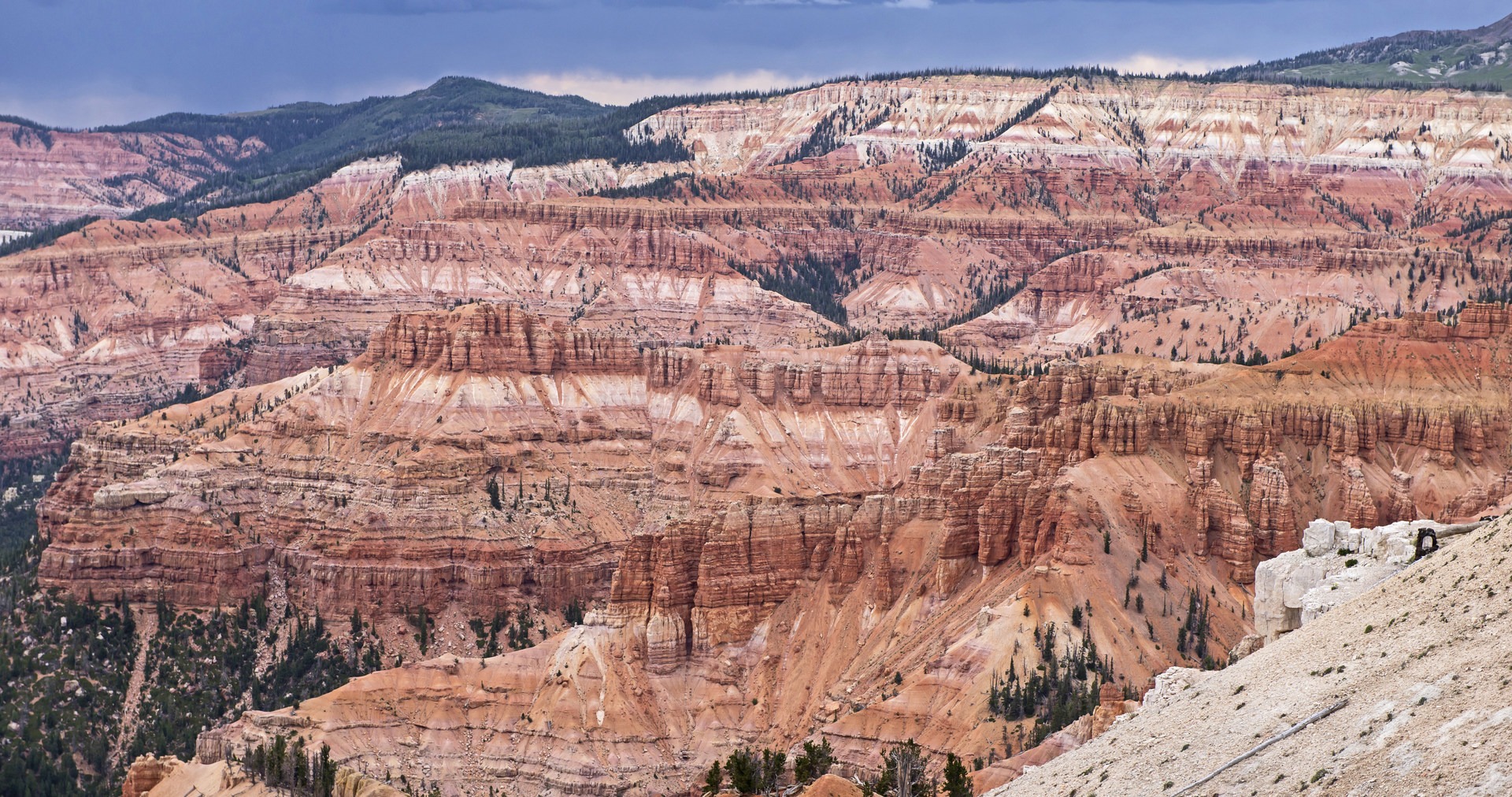You are here
The Markagunt Plateau in southwestern Utah rises steeply from the valley floor, creating the perfect place to capture the moisture of the rising and thus cooling air. The heavy precipitation has carved out the hoodoos and spires that make Cedar Breaks National Monument such a beautiful place to visit. Established in 1933, the monument was named for the Juniper trees that were misidentified as cedars, but the name has stuck. Often overlooked because of the many more popular nearby attractions such as Zion and Bryce Canyon, Cedar Breaks has a ton of great things to offer curious adventurers.
The many colored layers of spires, hoodoos, cliffs and gullies act like a geological snapshot of time. The strata perfectly preserves the area's history, bringing joy and wonder to tourists and scientists alike. The top layer is made of white volcanic pumice called rhyolitic tuff that was deposited by cataclysmic eruptions nearly 30 million years ago. The layers of yellow and red rock below the tuff are tinted by iron oxides, and manganese oxide adds distinct purples into the mix. Shale, limestone, and various forms of sandstone make up the binding agents and add a wide array of colors into the spectrum. The natural amphitheater looks like a mix between Bryce Canyon and the Grand Canyon, just on a much smaller scale, of course. The 6,100-acre park sits at a whopping 10,500 feet above sea level, so you will feel the elevation effects on your body, but the elevation also makes the monument a great escape from the desert's summer heat below.
There are several excellent and short trails within the monument, and they do not get many hikers. Spectra Point Trail is the most scenic, but it can be a little dangerous given the many storms that roll in. The Chessman Loop and Alpine Pond Loop are both located next to each other, and they offer a safer way to walk near the rim among the thick forests. Most visitors stick to the many lookouts such as the Sunset, Chessman and North overlooks. The park's campground, the visitor center, and the trailhead to Spectra Point Trail are all located at Point Supreme, which is also where they hold events such as star gazing parties, ranger-led discussions, and even the occasional stop by the Utah Symphony.
You will find many animals and flowers on the rim of the monument in the summertime, not to mention a much greater number of mushrooms than you normally find in Utah thanks to the steady precipitation. Mule deer, marmot, and porcupine are common; mountain lions are around, as well, but they are rarely seen. One of the main attractions of the park is the chance at seeing a bristlecone pine. These larger and beautifully gnarled trees are some of the oldest things on our planet, and one specimen at Spectra Point is thought to be 1,700 years old.
Brian Head ski resort is located just north of the monument and offers a place to get cell reception, groceries and pizza nearby. In winter the park shuts down along with Highway 148, but you can snowmobile, snowshoe and cross-country ski into the park from Highway 143 to see the hoodoos covered in snow. A warming yurt is located at the Alpine Pond Trailhead. The area acts as the headwaters of Mammoth Creek, which runs for about 20 miles before joining the Sevier River further southeast. Be careful about the many and frequent storms at this location in addition. Below the monument to the west is the Ashdown Gorge Wilderness, which provides nearby Cedar City locals with a ton of hiking and mountain biking opportunities.
Logistics + Planning
Current Weather: Powered by Dark Sky






















Comments
Sign In and share them.